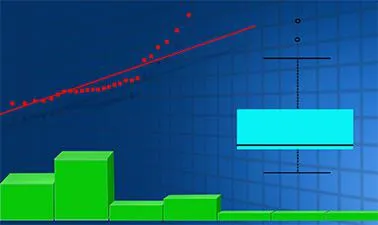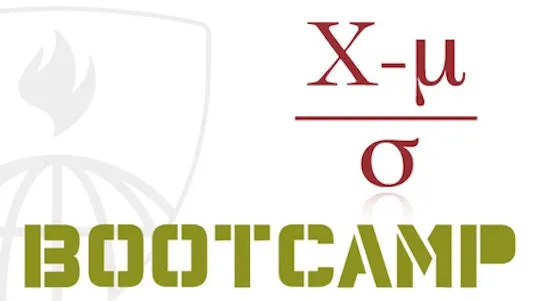
Introduction to Applied Biostatistics: Statistics for Medical Research 
This Applied Biostatistics course provides an introduction to medical statistical concepts and reasoning, with examples from published clinical research papers. Learners will gain hands-on experience with real-life datasets and open-source software such as R Commander and PS sample size software. Additionally, basic epidemiological concepts such as study designs and sample size computation will be covered. ▼
ADVERTISEMENT
Course Feature
![]() Cost:
Cost:
Free
![]() Provider:
Provider:
Edx
![]() Certificate:
Certificate:
No Information
![]() Language:
Language:
English
![]() Start Date:
Start Date:
Self paced
Course Overview
❗The content presented here is sourced directly from Edx platform. For comprehensive course details, including enrollment information, simply click on the 'Go to class' link on our website.
Updated in [March 06th, 2023]
This Applied Biostatistics course provides an introduction to important topics in medical statistical concepts and reasoning. Learners will be exposed to real-world medical data and will be able to analyze it through hands-on data analysis using real-life datasets. The course will also cover basic epidemiological concepts such as study designs and sample size computation. Open-source, easy-to-use software such as R Commander and PS sample size software will be used to facilitate the learning process. Examples from published clinical research papers will be used to introduce each topic.
[Applications]
Upon completion of this course, learners can apply the concepts and skills learned to analyze medical data and interpret the results. They can also use the open-source software to conduct sample size calculations and design studies. Learners can also use the epidemiological concepts to design and evaluate medical research studies.
[Career Paths]
1. Biostatistician: Biostatisticians are responsible for designing and analyzing medical research studies, as well as interpreting and presenting the results. They use statistical methods to analyze data from clinical trials, epidemiological studies, and other medical research. The demand for biostatisticians is increasing due to the growing need for evidence-based medical research.
2. Clinical Data Analyst: Clinical data analysts are responsible for collecting, organizing, and analyzing data from clinical trials and other medical research. They use statistical methods to identify trends and patterns in the data, and to develop insights that can be used to improve patient care. The demand for clinical data analysts is increasing due to the growing need for evidence-based medical research.
3. Epidemiologist: Epidemiologists are responsible for studying the distribution and determinants of health-related states or events in specified populations, and the application of this study to the control of health problems. They use statistical methods to analyze data from clinical trials, epidemiological studies, and other medical research. The demand for epidemiologists is increasing due to the growing need for evidence-based medical research.
4. Health Informatics Specialist: Health informatics specialists are responsible for managing and analyzing data from electronic health records (EHRs) and other medical databases. They use statistical methods to identify trends and patterns in the data, and to develop insights that can be used to improve patient care. The demand for health informatics specialists is increasing due to the growing need for evidence-based medical research.
[Education Paths]
1. Bachelor of Science in Biostatistics: This degree program provides students with a comprehensive understanding of biostatistical methods and their application to medical research. Students will learn how to design and analyze experiments, interpret data, and develop models to solve complex problems. The degree also covers topics such as probability, statistical inference, and data visualization. As the demand for biostatisticians continues to grow, this degree is becoming increasingly popular.
2. Master of Science in Biostatistics: This degree program provides students with an advanced understanding of biostatistical methods and their application to medical research. Students will learn how to design and analyze experiments, interpret data, and develop models to solve complex problems. The degree also covers topics such as probability, statistical inference, and data visualization. As the demand for biostatisticians continues to grow, this degree is becoming increasingly popular.
3. Doctor of Philosophy in Biostatistics: This degree program provides students with an in-depth understanding of biostatistical methods and their application to medical research. Students will learn how to design and analyze experiments, interpret data, and develop models to solve complex problems. The degree also covers topics such as probability, statistical inference, and data visualization. As the demand for biostatisticians continues to grow, this degree is becoming increasingly popular.
4. Master of Public Health in Biostatistics: This degree program provides students with an understanding of biostatistical methods and their application to public health research. Students will learn how to design and analyze experiments, interpret data, and develop models to solve complex problems. The degree also covers topics such as probability, statistical inference, and data visualization. As the demand for biostatisticians in public health continues to grow, this degree is becoming increasingly popular.
Course Provider

Provider Edx's Stats at AZClass
Discussion and Reviews
0.0 (Based on 0 reviews)
Explore Similar Online Courses

Online Marketing Course - Staying Close to the Customer

Application of Spectroscopic Methods in Molecular Structure Determination

Python for Informatics: Exploring Information

Social Network Analysis

Introduction to Systematic Review and Meta-Analysis

The Analytics Edge

DCO042 - Python For Informatics

Causal Diagrams: Draw Your Assumptions Before Your Conclusions

Whole genome sequencing of bacterial genomes - tools and applications

Doing Clinical Research: Biostatistics with the Wolfram Language

Biostatistics for Big Data Applications

Mathematical Biostatistics Boot Camp 1
 Related Categories
Related Categories
 Popular Providers
Popular Providers
Quiz
 Submitted Sucessfully
Submitted Sucessfully
1. Which of the following is NOT a software used in this course?
2. What is the main purpose of this course?
3. Which of the following is NOT a topic covered in this course?


Start your review of Introduction to Applied Biostatistics: Statistics for Medical Research